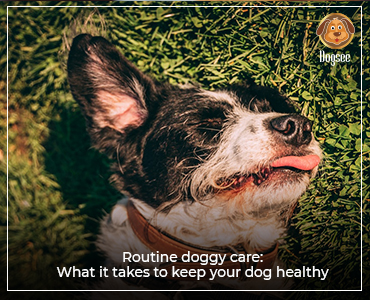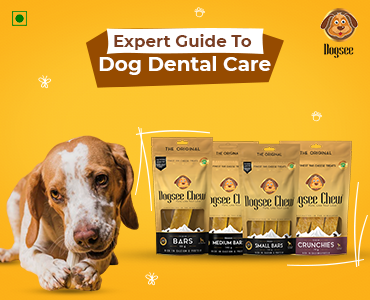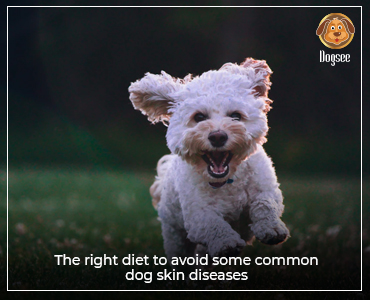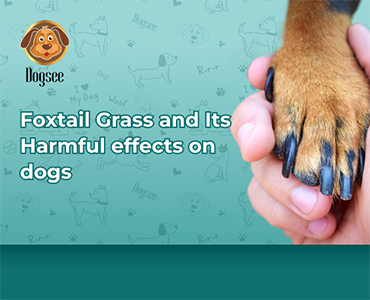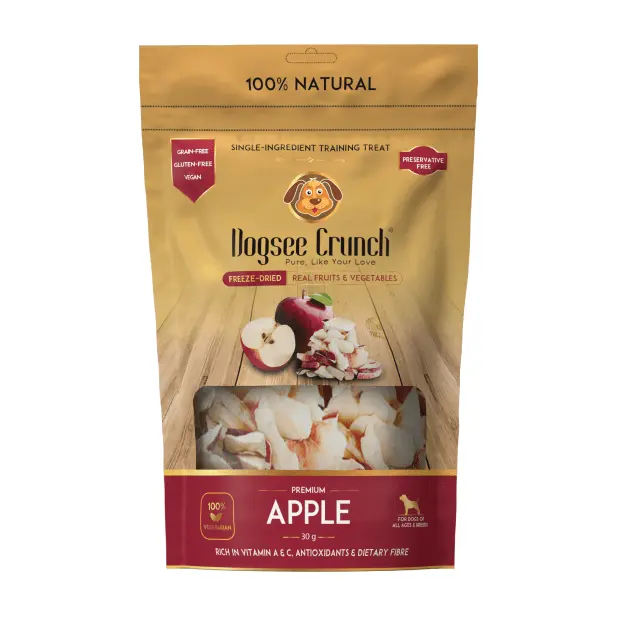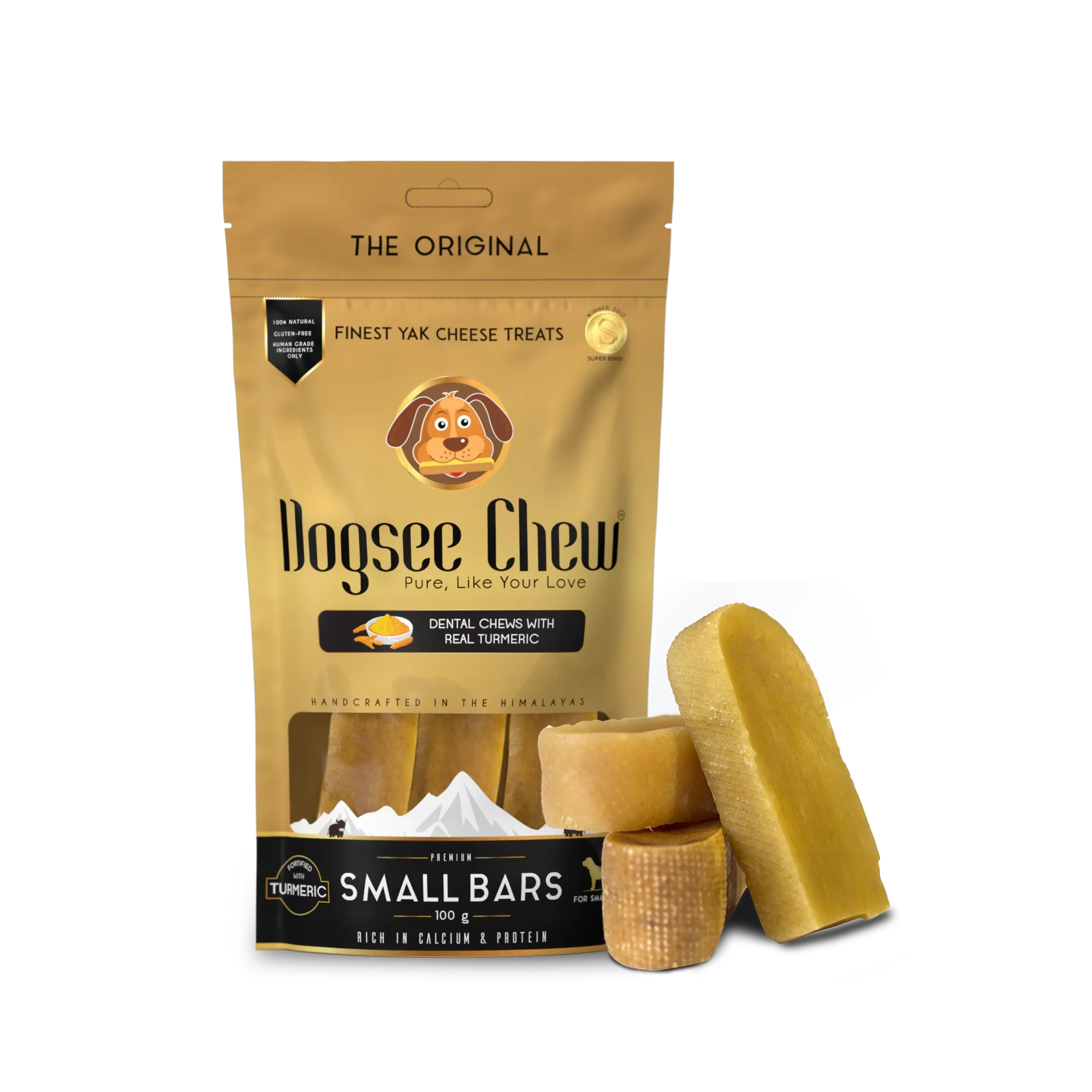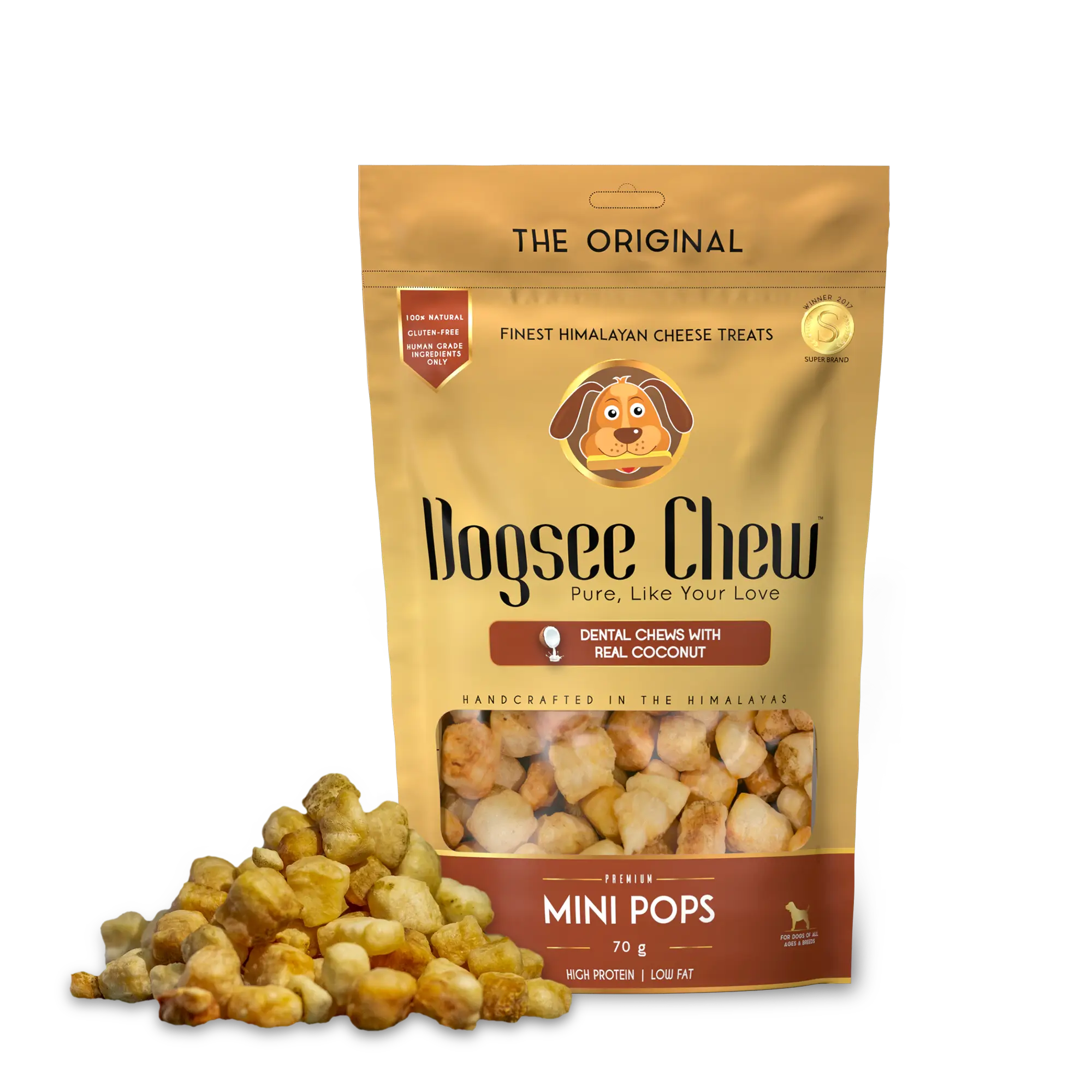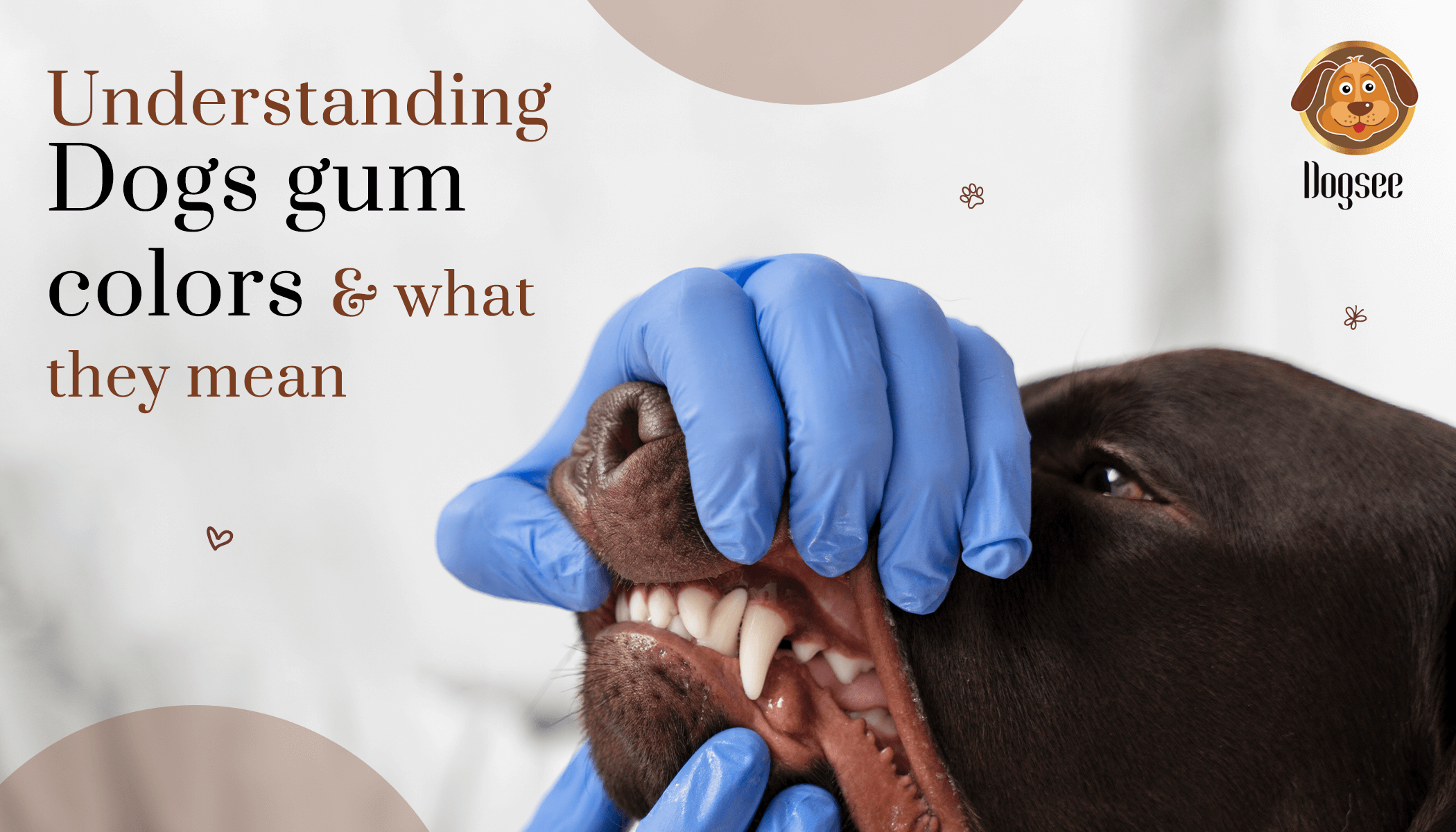
As devoted pet parents, ensuring the well-being of our beloved furry companions remains our foremost priority.
While we often pay attention to Doggo’s diet, coat health, and exercises, a quick peek inside their mouth will help us keep a check on their gum disease.
The color of Dog’s gum offers valuable insights into their overall health. Continue reading, as we’ll guide you through analyzing gum colors, their meanings, tips to take care of, and more.
Also, learn about the awesome benefits of dental chews for dogs and how they can help safeguard your pet’s oral health.
Let’s dive in.
What do healthy gums look like?
Well, a healthy doggo gum is bubble gum pink in color.
While a few breeds like Chow chows, German shepherds, Golden retrievers, and others have spotted or pigmented gums, they will still have some pink, which will help analyze their health.
Follow these steps while doing a Gum health check.
1 Gently lift your Dog’s Lips:
Ensure your pet is relaxed and comfortable in a calm and quiet environment. This is important to avoid accidental biting. Once you sense their comfort, go ahead and gently lift their lips.
2 Check the Gum Color:
As mentioned, the standard for healthy gum color is pink. Check for deviations like paleness, bluish tints, redness, or the presence of unusual colors (explained further in subsequent sections)
Gently press the pink portion of the gums; it should momentarily turn white and return to pink within 2 seconds (this is called CRT or capillary refill time)
If you notice discrepancies in both instances, schedule a check-up with your Vet.
3 Keep a note of other abnormalities:
Healthy gums have a moist and smooth texture and are without odor.
Watch out for signs of swelling, bleeding, or any lumps that might indicate health concerns or dental issues.
Common Dog Gum Colors & their meanings:
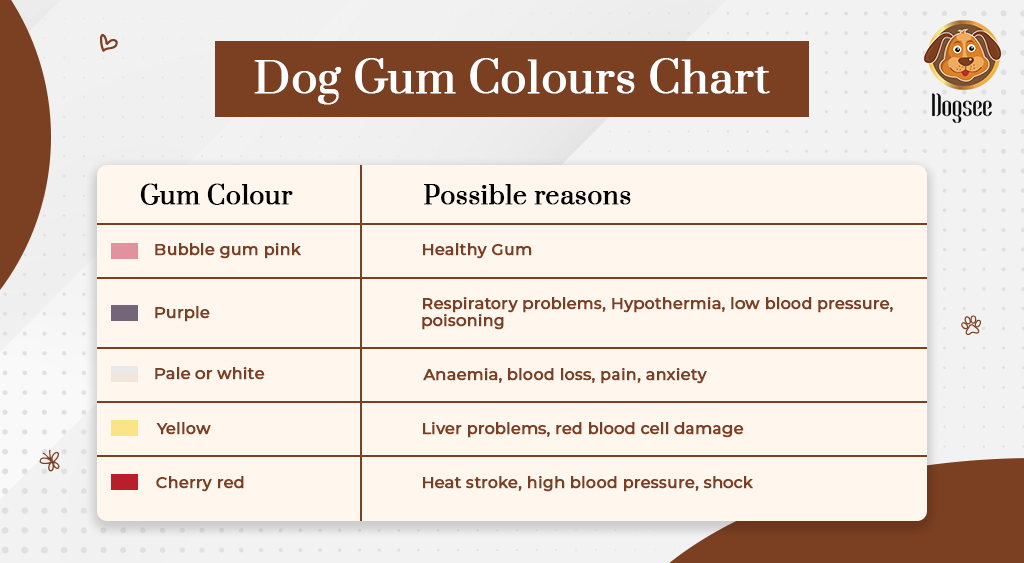
1. Pink Gums:
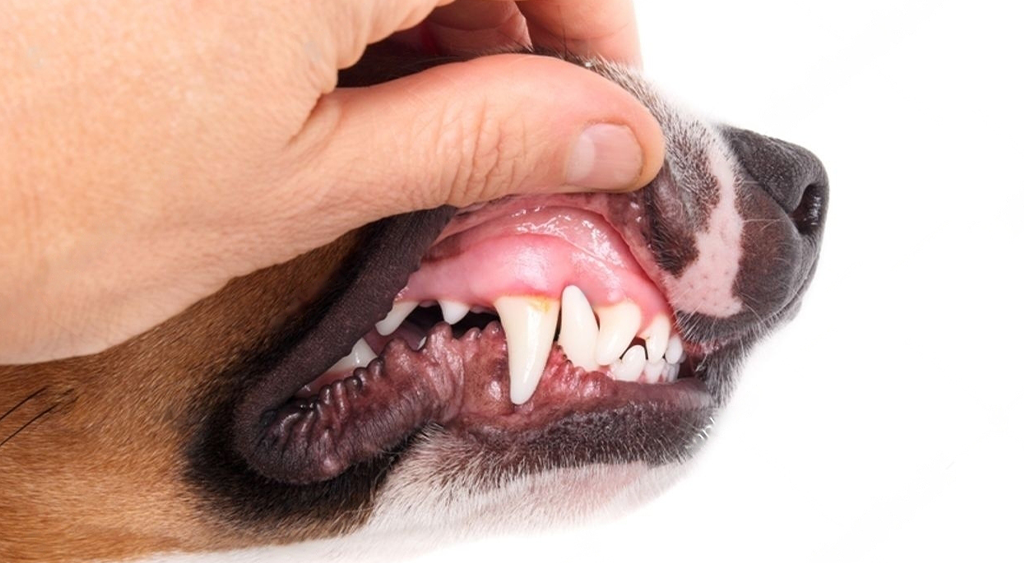
(Image Credits: Shutterstock)
A pink color indicates proper blood circulation and oxygenation, showcasing an overall state of well-being. It’s regarded as the gold standard for analyzing healthy canine gums.
2. Blue or Purple Gums:
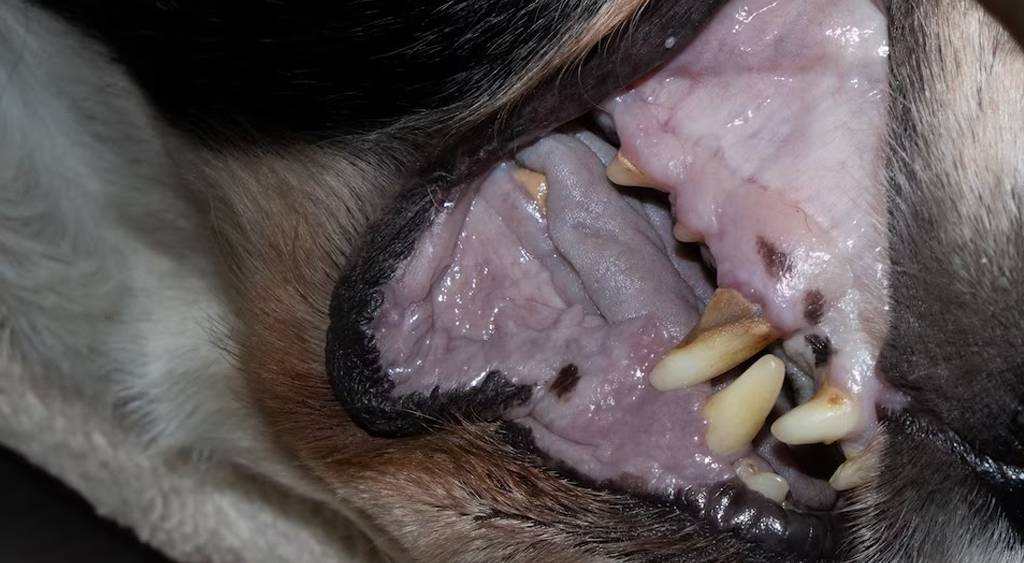
(Image Credits: PetMD)
Gums taking a bluish or purple hue signal a potential lack of oxygen. It is commonly noted with dogs that suffer from respiratory diseases, heart disease, and low blood pressure.
Preventive measures will include not smoking while your doggo is around and seeking professional help ASAP if your Doggo shows signs of troubled breathing.
3. Pale or White Gums:
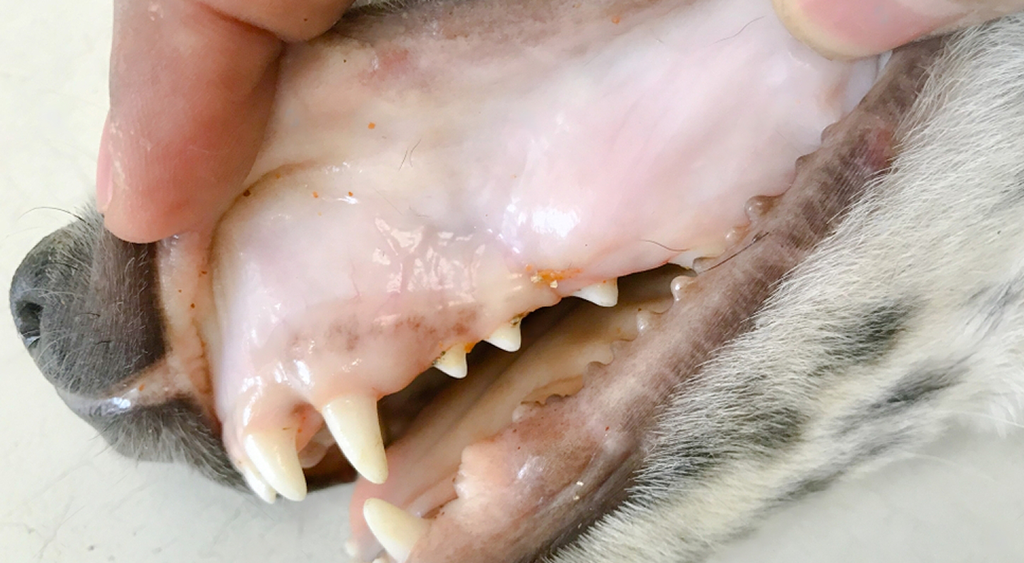
(Image Credits: Shutterstock)
Pale gums are a matter of concern. The potential factors for paleness can be anemia, heart disease, poor blood circulation, or shock. If your pup’s gum usually appears pale, it’s crucial to get it checked promptly by the Vet.
4. Yellow Gums:
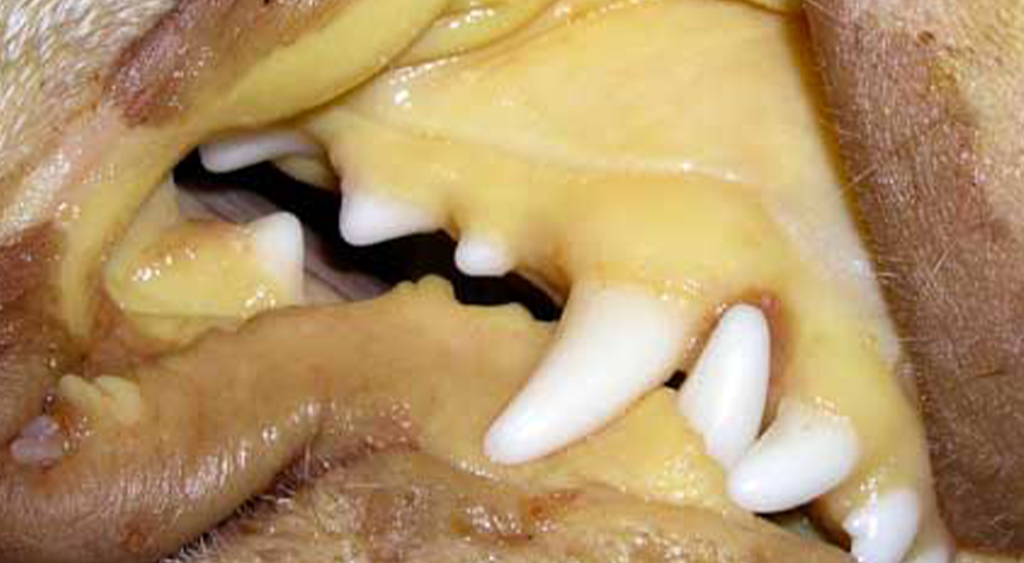
(Image Credits: Long Beach Animal Hospital)
Yellow gums are an indication of Doggo suffering jaundice or icterus. Other factors that cause gums to turn yellow are damage to red blood cells. vomiting, loss of appetite, and fatigue.
5. Red or Inflated Gums:
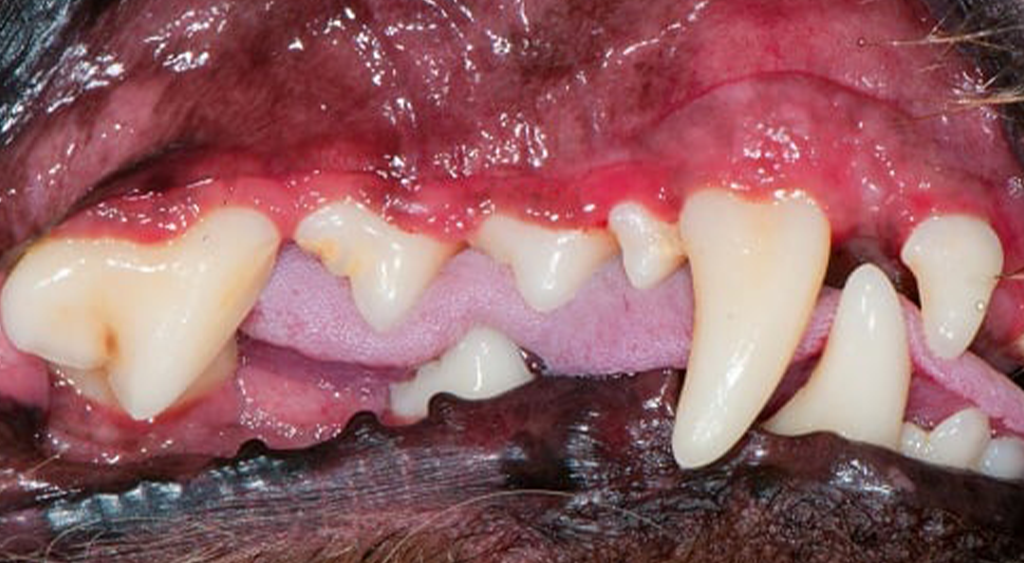
(Image Credits: Bulldogology)
Red or inflated gum color is a sign of oral infections or gingivitis. It could suggest irritation due to teething, loss of tooth, and excessive chewing behavior in the case of puppies.
It is also a sign of inflation or due to bleeding in the gums.
Other signs of unhealthy gums
In addition to gum color, these signs will provide a few more insights into your doggos oral health.
Bad Breath: Persistent bad breath signals an underlying dental problem such as tooth decay, gum disease, or digestive issues.
Regular dental care like brushing, and providing dental chews, can help maintain healthy gums and contribute to fresher breath.
Check out this blog to learn how healthy dog treats can help control bad breath: How cow and yak milk chews help freshen your dog's breath
Swollen or Bleeding Gums: Swelling or bleeding in doggos gums is caused generally by stomatitis, gingivitis, and growths which makes the gums very sensitive and more prone to bleeding.
In puppies, teething or rough usage of chew toys can lead to swelling or bleeding.
Growths/lumps/warts on the gums: Growths and lumps on Doggos gum appear like bumps or fleshy masses. Warts are small, rough skin growths caused by a viral infection known as HPV.
While a few types of gum growths are harmless and fade on their own, it's crucial to get them diagnosed early to keep doggo healthy.
5 Tips to keep Doggo’s gum healthy
Why are healthy dog gums super important?
Gum disease can cause severe health issues in your pooch like kidney or heart disease. It is caused when bacteria from infected gums travel through the bloodstream and affect other organs.
Here’s what you can do:
1. Brush regularly (once a week):
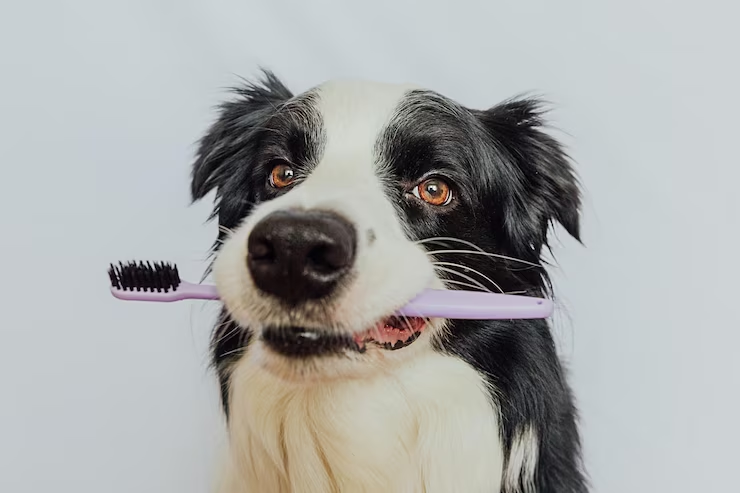
Weekly teeth brushing helps remove trapped food particles, plaque, and tartar buildup, ensuring clean teeth and fresher breath.
Use only dog-specific toothpaste to avoid intoxication and a gentle brush so that it's soft on their teeth.
2. Provide them with safe chew treats and toys:
Opt for dental treats like Dogsee Himalayan Cheese Chews that are specially crafted for dogs. The hard texture helps scrape away plaque and tartar buildup and helps keep breath fresh.
They are protein and calcium-rich treats that contribute to stronger bones and teeth. They are available in two delicious flavors - cheese & turmeric. Don’t forget to check them out.
3. Ensure fresh water for natural tooth cleansing:

Fresh water keeps doggos' gum hydrated and mouth clean. It helps wash away food particles and plaque buildup before it hardens and damages teeth. It’s one of the best home treatment for gum disease.
Adequate water intake fuels saliva production which in turn prevents tooth decay and gum disease. Encourage regular water breaks throughout the day, especially after meals or playtime.
4. Regular dental check-ups:
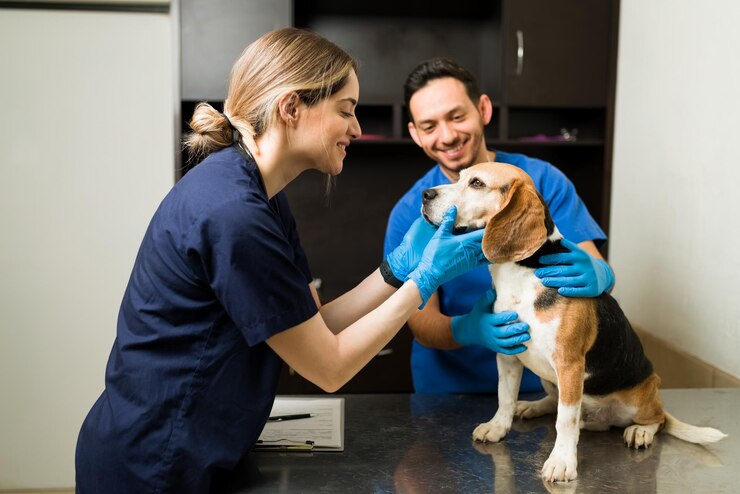
Schedule routine dental check-ups with your veterinarian for professional cleaning and gum health assessments. They can help detect and address any potential issues early on, ensuring your Doggo’s smile stays bright and healthy for years to come.
5. Balanced Diet:
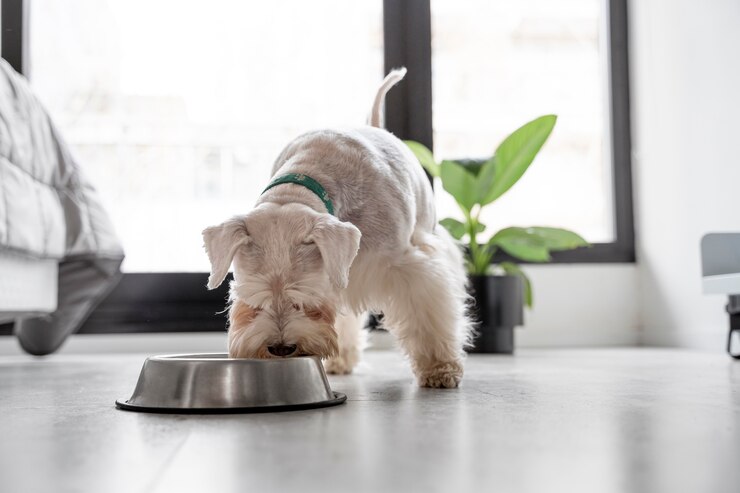
Make sure to Include protein and calcium-rich foods in their diet as they’ll help build and strengthen tooth enamel, repair tissues and support jawbone health.
(Note: Before feeding a new diet, consult your vet to double-check if feeding a particular food is okay. Introduce new food in small quantities and monitor their digestive response to the same.)
FAQs on Dog’s Gum and Dental Health:
1. Can the color of my dog's gums change temporarily due to factors like exercise or excitement?
Answer: Yes, temporary changes in gum color can occur due to increased blood flow during exercise or excitement. However, it's important to distinguish between temporary changes and persistent discoloration, as it may indicate underlying health issues.
2. What are the common gum diseases in dogs?
Answer: Here’s a list of common gum diseases in dogs.
Gingivitis: This is often caused by plaque and tartar buildup leading to inflammation of the gums.
Periodontitis: It is an advanced stage of gum disease, involving inflammation and infection of the structures (bone & gums) supporting the teeth
Halitosis (bad breath)
Gum recession: A dental condition where gums may recede, exposing the roots of the teeth, leading to sensitivity and potential tooth loss
Gum bleeding: Bleeding from the gums, especially during eating or brushing, can indicate infection or inflammation
Epulis: Non-cancerous growths on the gums that can vary in size and appearance
Stomatitis: It is a dental condition that causes inflammation in the gums and mucus membranes of the dog’s mouth.
3. How do dental treats promote healthy gums?
Answer: Dental treats like our Dogsee Himalayan Yak Cheese chews are specially crafted to enhance the doggo’s chewing experience.
The hard texture of the treat helps remove plaque and tartar and freshens breath. Also, regular chewing on hard treats increases saliva production which in turn contributes to healthier gums and enamel.
4. How often does my dog need a dental cleansing?
Answer: Apart from regular brushing and water cleansing, dental cleansing is very crucial.
Dental cleansing is done by a certified Veterinary dentist, which includes thorough dental examination, and teeth cleaning and polishing to remove plaque and tartar buildup that causes periodontal disease.
This professional treatment helps in the perfect analysis of your dog's dental health. Vets will also provide valuable suggestions and precautions to be taken.
Understanding Dog gum health: The bottom line!
Oral health plays a vital role in keeping your Doggo healthy.
Regular gum checks help monitor dental and other broader health issues. Ensure to follow the care tips suggested in this article and valuable recommendations of your vet.
At Dogsee our mission is to provide 100% natural, gluten and grain-free dental chews to pups worldwide. We are humbled to serve 50 mn+ customers in 30+ countries. We continue to revolutionize the pet care industry with our tasty, healthy, and innovative dog treats.
We hope you found this blog insightful - share it with fellow pet parents who can benefit. Do connect with us on our social platforms:
Instagram: https://www.instagram.com/dogseechew/
Facebook: https://www.facebook.com/dogseechew/
That’s it for now, see you in the next blog with another interesting topic. Thanks for reading, woof!
 HELPFUL1 people found it helpful
HELPFUL1 people found it helpful
Related Blogs
Subscribe to Our Blogs
and never miss on the latest update!








